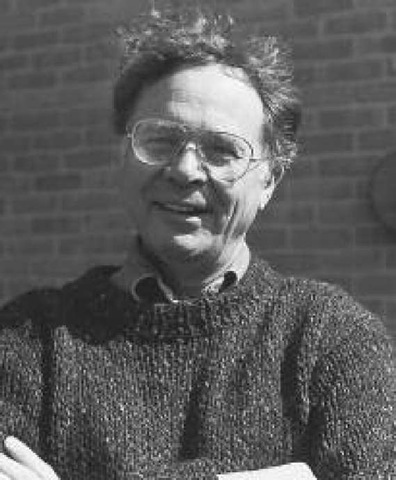(1931- ) American Chemical Oceanographer
Wallace Broecker has said that his entire research career is simply an elaboration on several chapters of his Ph.D. dissertation in 1958. Considering the magnitude of accomplishments in his career, this statement is analogous to the saying, “All I ever needed to know I learned in kindergarten.” It is true that two themes, evidence for an abrupt change in climate 11,000 years ago and the distribution of radiocarbon around the Atlantic Ocean generalize the basic ideas of his research, but they hardly summarize his career.
There are several groundbreaking contributions in Wallace Broecker’s career. His early dating of ocean sediments using carbon-13 methods set the stage for him to use decay products of uranium to obtain an older range. Instead of the 25,000-year limit of dating using radiocarbon, he extended his dating to 320,000 years. He studied the impact of glaciation on sedimentation in relationship to astronomical cycles. His work on reefs and carbonate banks led him to investigate the carbon and oxygen cycles with regard to these deposits and the role of atmospheric gases. He used stable isotopes to define these relationships and mapped the relative CO2 concentrations in the oceans.
In his most famous work, Broecker defined the interaction of the sediments, oceans, and atmosphere using evidence from carbon dioxide flux. He studied CO2 content of ice cores from Greenland in addition to stable isotopes. He found that the CO2 content showed abrupt changes between two basic levels, glacial and in-terglacial. It appears that the content of this greenhouse gas could be abruptly changed based upon ocean circulation in the North Atlantic. This research means that excessive production of greenhouse gases could cause a sharp rather than gradual change in climates, which would be devastating. Broecker studied the downslope limits of alpine glaciers as a reflection of temperatures and found the same abruptness of change. Deep-sea coring of sediments in the North Atlantic supported periodic catastrophic bursts of ice into the ocean which completely disrupted the chemical systems.
Wallace Broecker outside of the Lamont-Doherty Earth Observatory in 1990
This studying of the surface of the Earth in terms of a single large chemical system in various stages of equilibrium and disequilibrium in response to flux of various gases defines virtually all of Broecker’s research. He studied the flux of gas by measuring radioactive radon in the water. Because it has such a short life, concentration gradients show flux direction and rate. Using all of these chemical systems, he wrote his acclaimed textbook Tracers in the Sea. He also studied flux in terrestrial environments in lakes eutrophied with phosphate in Canada. Considering the vast and ever-growing eutrophication of our lakes in developed areas, this work has great applied importance. He is even involved in carrying out experiments in the famous Biosphere 2. Because it is a closed chemical system, experiments may be carried out on mass balances of CO2 and other gases. As evident from this review of his work, Wallace Broecker has produced researchthat is not only groundbreaking within the profession, it also has profound implications for our continued existence on the planet. In a field crowded with giants, Wallace Broecker has established himself as a leader.
Wallace Broecker was born on November 29, 1931, in Chicago, Illinois. He grew up in Oak Park, Illinois, during the Great Depression and graduated from Oak Park-River Forest High School in 1949, the alma mater of Ernest Hemingway. He attended Wheaton College, Illinois, but transferred to Columbia College, New York, where he earned a bachelor of arts degree in 1953. He married his wife, Grace, in 1952. He remained at the Lamont-Doherty Geological Observatory of Columbia University for his graduate studies and earned a master of arts and a Ph.D. in 1956 and 1958, respectively. His dissertation adviser was J. Laurence Kulp, but several prominent classmates and colleagues, both internal and external, appear to have had as much, if not more, influence on his work. Broecker never left Lamont-Doherty Observatory. He started as an instructor in 1956 and remains there today as the Newberry Professor of Earth and environmental science since 1977. He served as chair of the department from 1977 to 1980. He was also a visiting professor several times to places like California Institute of Technology and Heidelberg, Germany, where he was a von Humboldt Fellow.
The productivity that Wallace Broecker has demonstrated is simply astounding. He is an author of 385 articles in international journals, professional volumes, and technical reports. One year he published 23 scientific articles. These studies are some of the best recognized of their kind and appear in the most prestigious journals.
He has also written six books, two of which are highly regarded textbooks. His achievements have been well recognized by the profession in terms of honors and awards. He is a member of the National Academy of Sciences and the American Academy of Sciences. He was awarded a Sloan Fellowship in 1964, the Arthur L. Day Medal by the Geological Society of America (1984), the Huntsman Award by the Bedford Institute of Canada (1985), the Vetlessen Award from the Vetlessen Foundation (1987), and the Gold-schmidt Award from the Geochemical Society (1988).
Broecker has performed service to the profession too extensive to list here. He was president of the Geochemical Society in 1981. He has served on numerous panels and committees for the National Science Foundation, National Research Council, Joint Oceanographic Institute for Deep Earth Sampling, several national and international oceanic boards, the Geochemical Society, and the Geological Society of America, among others.

